Archive of Biomedical Science and Engineering
Effect of solutionizing heat treatment on the structure and mechanical properties of silicon bronze (Cu-10wt%Si-2wt%Ni)
Ukamaka E Ezeobi1*, Chidume N Nwambu2, Eugene E Nnuka2 and Bala M Bosan1
2Department of Metallurgical and Materials Engineering, Nnamdi Azikiwe University, Awka, Nigeria
Cite this as
Ezeobi UE, Nwambu CN, Nnuka EE, Bosan BM (2024) Effect of solutionizing heat treatment on the structure and mechanical properties of silicon bronze (Cu-10wt%Si-2wt%Ni). Arch Biomed Sci Eng 10(1): 017-022. DOI: 10.17352/abse.000033Copyright
© 2024 Ezeobi UE, et al. This is an open-access article distributed under the terms of the Creative Commons Attribution License, which permits unrestricted use, distribution, and reproduction in any medium, provided the original author and source are credited.The effect of solutionizing temperature, soaking time, and quenching media on the structure and mechanical properties of silicon bronze (Cu-10wt%Si-2wt%Ni) has been examined. The samples were produced using the sand casting technique, machined to the required dimensions, and solutionized at temperatures of 700 oC, 800 oC, and 900 oC for 0.5, 1.5, 2.5, and 3.5 hrs and quenched in brine and oil respectively. The prepared as-cast and solution heat-treated samples were subjected to mechanical tests (hardness, and impact strength tests) as well as microstructural analysis. The results of the microstructural analysis revealed the presence of coarse grains and coarse sparse distribution of Ni2Si precipitate in the as-cast sample while the surface morphology of the heat-treated samples consisted of fine grains of intermetallic compounds evenly dispersed in the copper matrix. It was also observed that the microstructures of samples solutionized at lower temperatures (700 oC) revealed finer grains with better grain distributions compared with samples solutionized at higher temperatures (800 oC and 900 oC). These microstructural changes led to the improvement of the hardness and impact strength of the alloy. The hardness value of the as-cast sample 48.5 HRB, increased to 53.7 HRB and 57.8 HRB after solid solution heat treatment at 700 oC for 3.5 h and cooled in brine and oil, respectively. It was also observed that the hardness of the brine-cooled samples increased further to 72.45 HRB after 3.5 h at 900 oC. The results obtained also showed that the solid solution heat-treated samples gave an optimum impact strength value of 214 J/m3 and 183 J/m3 from the samples solutionized at 900 oC and 800 oC for 3.5 h and 1.5 h and cooled in brine and oil respectively. This was concluded to be a result of solid solution alpha and beta phases formed which improve energy absorption in the alloy.
Abbreviations
Cu: Copper; Si: Silico; Ni: Nickel; HRB: Rockwell Hardness Test; Mn: Manganese; W: Tungsten; Zn: Zinc; Sn: Tin; BHN: Brinell Hardness Test; Mpa: Megapascal; SEM: Scanning Electron Microscope; EDS: Energy Dispersive Spectroscopy; OM: Optical Microscope
Introduction
Copper-based alloys are one of the most commercially important metals that are valued for their combination of strength, corrosion resistance, good machinability, wear resistance, non-magnetism, cost-effectiveness, and other desirable properties making them versatile materials used in a wide range of applications, particularly in the industrial machinery components, electrical and electronics, architectural fixtures, marine environments and other industrial applications [1]. There are hundreds of commercial copper alloys and each of these alloys has its peculiar properties and applications [2]. Silicon bronze is one of the copper-based alloys with excellent mechanical and physical properties which make the alloy suitable for many applications such as aircraft, marine, industrial, chemical, and mechanical [3]. The strength of this class of Cu-based alloys can be effectively improved through various means among which are alloying [4], heat treatment [5], and metalworking [6]. Alloying enhances the properties of silicon bronze by increasing the strength and hardness of the alloy. However, nickel is one of the excellent alloying elements that plays a crucial role in enhancing the properties and performance of Cu-Si alloys making them highly versatile and suitable for a wide range of applications in various industries [7]. Nickel addition to Cu-Si alloys has a positive influence on the material’s warm strength properties and it induces the precipitation of a secondary phase (δ-Ni2Si) in the copper matrix and this helps in refining the microstructure and improving the mechanical properties of the alloy [1,8,9]. Silicon, when added to copper, improves its hardness and fluidity. High fluidity accompanying silicon addition makes Cu-Si alloys a potential material for casting intricate shapes [7]. Heat treatment process especially solid solution heat treatment is commonly applied to silicon bronze and other copper alloys to modify the microstructure and properties by homogenizing the alloy’s composition, eliminating segregation or precipitation of secondary phases, and improving the mechanical properties of the alloy through adequate control of composition, cooling rates, and heat treatment parameters [10,11]. Overall, solutionizing heat treatment is a vital process for optimizing the properties and performance of silicon bronze, making it suitable for a wide range of industrial and commercial applications such as aerospace, automotive, marine, and electronics, where precise control of material properties is critical for performance and reliability [12].
Few researches have been conducted on the effect of heat treatment techniques on the structure and mechanical properties of silicon bronze [10] investigated the effects of carbide-forming elements (manganese and tungsten) and solid solution heat treatment on the microstructure, and mechanical properties of copper-silicon binary alloys. The study indicated that solution heat-treated samples showed finer grains compared to the control sample which led to an increase in both ultimate tensile strength and hardness of Cu-3Si-W and Cu-3Si-3Mn alloys. Also, Cu-3Si-W alloys recorded a maximum ultimate tensile strength and hardness of 298 MPa and 364 BHN while the Cu-3Si-3Mn alloys recorded maximum ultimate tensile strength and hardness of 385 MPa and 390 BHN, respectively with a decrease of percentage elongation for each alloy after undergoing solid solution treatment [13] revealed in the study on the influence of homogenization heat treatment on grain characteristics and mechanical properties of copper-silicon-zinc and copper-silicon-tin ternary alloys, that homogenization heat treatment increased the ultimate tensile strength and hardness of Cu-3Si-3Zn alloys from 353 MPa to 376 MPa and from 254 BHN to 268 BHN but showed a decrease in the Cu-3Si-3Sn alloys which recorded an increase in percentage elongation after homogenization heat treatment. The results also showed that the addition of tin and zinc significantly increased the percentage elongation, ultimate tensile strength, and hardness of the alloy [1] studied the effect of nickel addition on the microstructure, tensile, and corrosion properties of cold-rolled silicon bronze. The result of the study showed that Ni-modified Cu-Si alloys revealed the presence of Cu-rich α-phase and δ-Ni2Si precipitates along the α grain boundaries along with the reduction in the grain sizes and refined microstructure. The study also showed that an increase in Ni addition from 0.2 to 0.8 wt% increased the tensile strength and hardness of Ni-modified Cu-Si along with an increase in δ -Ni2Si precipitates and excellent corrosion resistance in a sulfuric acid environment as well as reduction in corrosion current density (Icorr). The main aim of this work is to investigate the effect of solutionizing temperature, soaking time, and quenching media on the structure and mechanical properties of silicon bronze with the sole aim of developing a new silicon bronze with improved hardness and impact strength.
Experimental procedure
The copper wire (99.87% purity), pure silicon powder, and nickel wire (99.7% purity) were used as a base material to produce the Cu-10wt%Si-2wt%Ni alloy. Heat treatment parameters investigated were solutionizing temperatures (700 oC, 800 oC, and 900 oC), soaking times (0.5, 1.5, 2.5, and 3.5 hrs), and quenching media (brine and oil). Sand casting technique was used to produce the bronze alloys. The appropriate amount of Cu, Si, and Ni required to produce the bronze alloy compositions was determined by charge calculation, and the weight in grams of each material was measured using an electric weighing scale (NKS-6). To produce the alloy samples, the required amount of nickel wire was first charged into the bailout crucible furnace and after attaining a temperature of 1083 oC, a predetermined weight of copper wire was added into the furnace. When the alloy attained a melting temperature of nickel (1453 oC), the appropriate amount of silicon powder was placed in a scoping spoon introduced into the melt, stirred vigorously, and allowed for 10 minutes to dissolve. The mixture was stirred again to achieve a complete diffusion of the silicon metal into the melt and to ease castings, and cast into the prepared sand mold cavity with specific dimensions of 14 mm diameter and 240 mm length. The cast samples were machined to the standard dimension for the mechanical tests (hardness and impact strength) and microstructural analysis. The machined samples were subjected to solution heat treatment at temperatures of 700 oC, 800 oC, and 900 oC for 0.5, 1.5, 2.5, and 3.5 hrs respectively using a tubular electric heat treatment furnace (model: 180-18) and quenched in brine and oil respectively.
The hardness test was conducted using a B-scale Rockwell hardness tester (model: 38506). The impact energy was carried out on the samples on a 300J capacity pendulum impact strength testing machine (model: 33716) of dimensions 55 x 10 x 10 mm with a 2mm deep notch (∆45o) inscribed at the center of the sample, following the ASTM E23 standards. The specimens for microstructural analysis were first subjected to grinding with BG20 electric belt grinder (model: 800-500) and further ground with a Handimet 11 Patents manual grinder (model:39-1472) that contains a silicon carbide grinding paper of grit sizes 240, 320, 400 and 600 μm), polished to mirror finish using an ultrafine polishing cloth which was enhanced by the addition of gamma micropolish alumina paste of particle size 0.05 micron along with distilled water, rinsed with water and air dried with a Lion D72605 Bisigen air gun drying machine. The specimens were subjected to etching by swabbing them in a mixture of 2g of K2Cr2O7, 8 ml of H2SO4, 4 drops of HCL, and 100 ml of water for 60 seconds. The etched samples were rinsed in water, dried, and subjected to microstructural examination using an Olympic optical metallurgical microscope (model: GX51F) and scanning electron microscopy (SEM) (Model: Joel-JSM 7600F) equipped with energy dispersive spectroscopy (EDS).
Results and discussion
Hardness and impact properties of the studied alloy
The effects of solid solution temperature, time, and cooling rates on hardness, and impact strength of Cu-10wt%Si-2wt%Ni alloy are presented in Figures 1-6.
As seen in Figure 1, the as-cast Cu-10wt%Si-2wt%Ni alloy recorded a hardness value of 48.5 HRB. The hardness value was increased after solid solution heat treatment. Notably, there is a progressive increase of hardness value at each solutionizing temperature and time in Figure 1. The lowest hardness value of the brine-cooled samples 46.07 HRB was observed at 700 °C for 0.5 hours while the highest hardness value of 72.50 HRB was observed at a temperature of 900 °C for 3.5 hours. It was evidenced in Figure 1 that solid solution heat treatment helps in the improvement of the hardness of the alloy and this results in solid solution strengthening which forms a fine precipitate in the copper matrix as evidenced in Plates 1,2 which is in line with the result by the researcher [10,14].
The hardness values of oil-cooled Cu-10wt%Si-2wt%Ni alloy show a progressive increase in hardness with an increase in solutionizing time at all temperatures but also a corresponding decrease in the hardness with increasing temperature as evidenced in Figure 2. This decrease in the hardness of the alloy is a result of grains coarsening which can be linked to the change in the microstructure as evidenced in Plates 3,4 and this supports the findings by [13,14]. The highest hardness was 58.6 HRB observed at 700 °C for the oil-cooled samples at a time of 3.5 hours while the lowest hardness was 53.7 HRB experienced at 900 °C at 0.5 hours.
Figure 3 shows the effect of solutionizing time on the hardness properties of brine-cooled and oil-cooled samples. The graph shows a general increase in both the brine and oil-cooled samples. This is a result of the solid solution strengthening mechanism of the alloy after undergoing heat treatment.
Figure 4 depicts the impact strength of Cu-10wt%Si-2wt%Ni alloy after quenching in brine at varying solutionizing temperatures. The as-cast alloy recorded an impact strength value of 120 J/m3. It can be observed that at 700 °C, there was a progressive decrease in impact strength from 100 J/m3 to 82 J/m3 but at 900 °C there was an increase in impact strength with an increase in solutionizing time from 0.5 to 3.5. An impact strength of 214J/M3 was recorded for the brine-cooled samples at a solutionizing time of 3.5 hours. This can be attributed to solid solution alpha and beta phases formed and hence improved energy absorption in the alloy [15].
Figure 5 shows the effect of the solutionizing temperatures on the impact strength of the alloy. It can be observed that the control sample presented better impact properties than samples solutionized at 700 °C and 900 °C, but at 0.5hrs and 1.5hrs of 800 °C, the impact strength increased but decreased beyond 1.5 hrs solutionizing time indicating that the optimum solutionizing time had been reached. The decline in the impact strength can be linked to the precipitation of coarse grains in the copper matrix.
Figure 6 above shows the impact strengths of both the brine and oil-quenched samples, and from the trend of the graph, we can deduce that the impact strengths of the brine-cooled samples decreased with an increase in solutionizing time from about 100J/m3 to 72 J/m3 while the oil-cooled samples showed an increase to about 1.5 hrs beyond which a decline was observed.
Microstructural analysis of the studied alloy
The Optical Microscopy (OM) and Scanning Electron Microscopy (SEM) with energy dispersive spectroscopy (EDS) of the studied alloy in as-cast and solid solution heat-treated conditions are presented in Plates 1-7. Plates 1,4,5 show the micrographs of the samples with the best impact strengths and hardness values at different quenching media.
The Optical Microscopy (OM) of Cu-10wt%Si-2wt%Ni alloy in as-cast as presented in Plates 3 revealed a dendritic primary grain separated by grain boundaries, which is embedded within the copper matrix and is identified as α-phase and coarse intermetallic compound (Ni2Si). The grains with irregular shapes and sizes are scattered within the matrix which corresponds with the report by [14].
From Plate 1, there is a uniform distribution of phases in the copper matrix. It can be observed that the addition of solid solution heat treatment significantly modified and refined the grains compared to the as-cast alloy [13] in Plate 2. This refinement resulted in an increased number of grain boundaries and dislocation density within the alloy [15]. This change observed in the microstructure, led to an increase in hardness [10] and impact strength of the alloy. This is to point out that the microstructures of the samples as shown in Figure 2 revealed finer grains and better grain distribution, leading to an increase in dislocation density and better mechanical properties.
The microstructure of oil-cooled samples solutionized at a lower temperature (700 oC) as seen in Plate 5 revealed finer grains with enhanced grain distributions compared with samples solutionized at a higher temperature (800 oC) as seen in Plate 6. This is because, with increasing solid solution temperature and time, the diffusion rate increases leading to the precipitation of more grains at the grain boundaries which leads to the grains coarsening [4]. The presence of coarse grains is associated with a decrease in the hardness and impact strength of the oil-cooled alloy as seen in Figures 2,5.
The Scanning Electron Microscopy (SEM) with Energy Dispersive Spectroscopy (EDS) of the studied alloy in as-cast conditions presented in Plate 4 depicts the presence of segregated primary silicon and coarse intermetallic phase (Ni2Si) distributed in the copper matrix. The SEM microstructure in Plate 4 reveals coarse grains compared to the heat-treated samples in Plates 2,7. This is simply a result of an increased diffusion rate, leading to the enlargement of grains [13]. The EDS indicated the presence of these major elements such as Cu, Si, Ni, Fe, Na, Al, Mg, Cl, S, P, Ca, K, etc as well as in Plates 2,7.
The SEM micrograph of brine-cooled samples in Plate 6 revealed a refined and modified grain after solid solution heat treatment [10]. Solid solution heat treatment application retards the formation of segregated primary silicon reducing the grain size and hence, the modified structure helps to increase the mechanical properties of the alloy as presented in Figure 1, 4. The grain refinement as a result of retard grain growth seen in SEM (Plate 2) is also in line with OM in Plate 1.
The surface morphology of the oil-coiled sample in Plate 7 depicts the appearance of coarse grains in the copper matrix which shows low dislocation density in the alloy structure and this is in line with the study by [14]. As compared to another oil-cooled micrograph, it was observed that the oil-cooled samples solutionized at lower temperatures (700 oC) revealed finer grains with enhanced grain distributions compared with samples solutionized at higher temperatures (800 oC and 900 oC). This is because as increasing solid solution temperature and time, the diffusion rate increases leading to the precipitation of more grains at the grain boundaries which leads to the grains coarsening. The presence of coarse grains is associated with a decrease in the hardness of the alloy as seen in Figure 2.
Conclusion
The effects of heat treatment parameters on the structure and some mechanical properties of Cu-10wt%Si-2wt%Ni alloys have been explored experimentally. The hardness and impact strength of the as-cast alloy were examined and linked with the microstructure. From the results obtained, fine-grained Cu-10wt%Si-2wt%Ni alloy was achieved through solid solution heat treatment at varying heat treatment temperatures and times, solid solution heat treatment significantly affected the hardness, and impact strength of as-cast Cu-10wt%Si-2wt%Ni alloy, the brine and oil-cooled samples exhibited maximum impact strength values of 214 J and 183 J at 90 oC and 800 oC for 3.5 h and 1.5 h, respectively, and finally, the brine-cooled and oil-cooled samples indicated a maximum hardness value of 72.45 HRB and 57.8 HRB at 900 ºC and 700 ºC for 3.5 hrs, respectively.
Comparatively, the hardness and impact strength of brine-cooled samples as shown in Figures 1,4 increased with an increase in solutionizing temperatures and times as a result of microstructural changes (grain refinement and increased dislocation density) while the oil-cooled samples as shown in Figures 2,5 decreased correspondingly with an increase in solutionizing temperatures and times which is attributed to coarsening of the grains. However, alloys cooled in brine gave the best mechanical properties, owing to the fine grain structure and better grain distribution in the copper matrix.
The authors acknowledge the support of the Management of the National Metallurgical Development Centre (NMDC), Jos Nigeria, and the Management of Ahmadu Bello University (ABU), Zaria, Nigeria for providing the equipment used for this research.
- Asaolu AO, Omotoyinbo JA, Oke SR, Falodun OE, Olubambi PA. Effect of nickel addition on microstructure, tensile and corrosion properties of cold rolled silicon bronze. Mater Today Proc. 2020 Jun; 38:1147-1151. doi: 10.1016/j.matpr.2020.07.136.
- ASM Specialty Handbook. Copper and copper alloys. International ASM Material Park, OH 44073-0002, ISBN 2001022956. USA. 2015.
- Rao kV. A study on a novel approach for minimization of tool vibration and surface roughness in orthogonal turn milling of silicon bronze alloy. Silicon. 2019; 11:691–701. https://doi.org/10.1007/s12633-018-9953-6.
- Nnakwo KC, Nnuka EE. Correlation of the structure, mechanical and physical properties of Cu3wt%Si-xwt%Sn silicon bronze. J. Eng. Appl. Sci. 2018; 13:83-91.
- Zhang W, Xia W, Wen L, WU Y, Pan G. Mechanical properties and tribological behavior of a cast heat resisting copper base alloy. J. Cent. South Univ. TECHNO. (Journal CSUT). 2013; 9(4):235-239.
- Wang H, Chen H, Gu J, Hsu C, Wu C. Effect of heat treatment processes on the microstructures and properties of powder metallurgy produced Cu-Ni-Si-Cr alloy. Mater Sci Eng A. 2014 Sep 8; 619:221-227.
- Lei Q, Li Z, Dai C, Wang J, Chen X, Xie JM, Yang WW, Chen DL. Effect of aluminium on microstructure and property of Cu-Ni-Si alloys. Mater Sci Eng A. 2013 Apr 1; 572:65-74.
- Chen W, Jia Y, Yi J, Wang M. Effect of addition of Ni and Si on the microstructure and mechanical properties of Cu-Zn alloys. J Mater Res. 2017 Sep; 32(16):3137-3145. doi: 10.1557/jmr.2017.145.
- Tao S, Lu Z, Xie H, Zhang J, Wei X. Effect of high contents of nickel and silicon on the microstructure and properties of Cu-Ni-Si alloys. Mater Res Express. 2022 Mar 30; 9:046516. doi: 10.1088/2053-1591/ac64ec.
- Ijomah AI, Nnakwo KC, Nwankwo NE, Okeke IU. Evaluation of solid solution strengthening of copper-silicon binary alloys by carbide forming elements. Int J Mech Ind Technol. 2023; 11(1):48-53. doi: 10.5281/zenodo.8348120.
- Rajan TV, Sharma CP, Sharma A. Heat treatment: principles and techniques. 2nd ed. New Delhi: PHI Learning Private Limited; 2011. ISBN-978-81-203-4095-4.
- Smith WF, Hashemi J. Foundations of materials science and engineering. 6th ed. New York, NY: McGraw-Hill Education; 2019. ISBN 978-1-259-69655-8.
- Nwankwo NE, Nnakwo KC, Ijomah AI, Okeke IU. Influence of homogenization heat treatment on grain characteristics and mechanical properties of copper-silicon-zinc and copper-silicon-tin ternary alloys. Int J Eng Res Rev. 2023;11(3):64-69. doi: 10.5281/zenodo.8348507.
- Ijomah AI, Nnakwo KC, Odo JU, Okeke IU. Improving the structure, tensile strength and hardness of molybdenum-doped copper-silicon alloy system. Int J Mech Ind Technol. 2023;11(1):54-59. doi: 10.5281/zenodo.8348223.
- Ijomah AI, Nnakwo KC, Odo JU, Okeke IU. Microstructure, impact and electrical behavior of fine grained Cu-Si-(Mg, Ti) alloy after solid solution strengthening. J Emerg Technol Innov Res (JETIR). 2023;10(9): ISSN-2349-5162. www.jetir.org
Article Alerts
Subscribe to our articles alerts and stay tuned.
 This work is licensed under a Creative Commons Attribution 4.0 International License.
This work is licensed under a Creative Commons Attribution 4.0 International License.


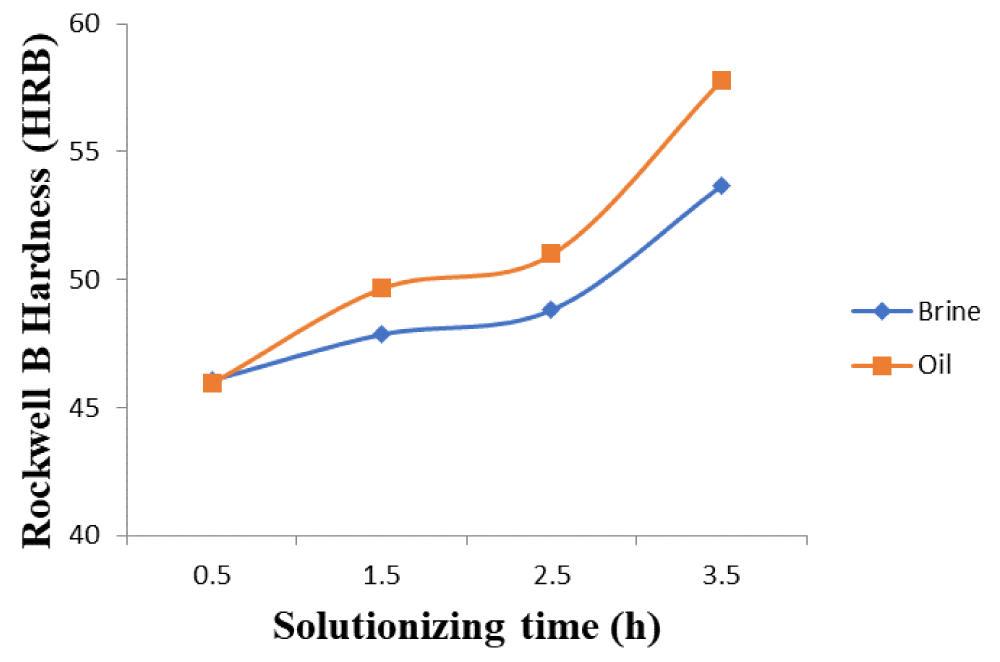
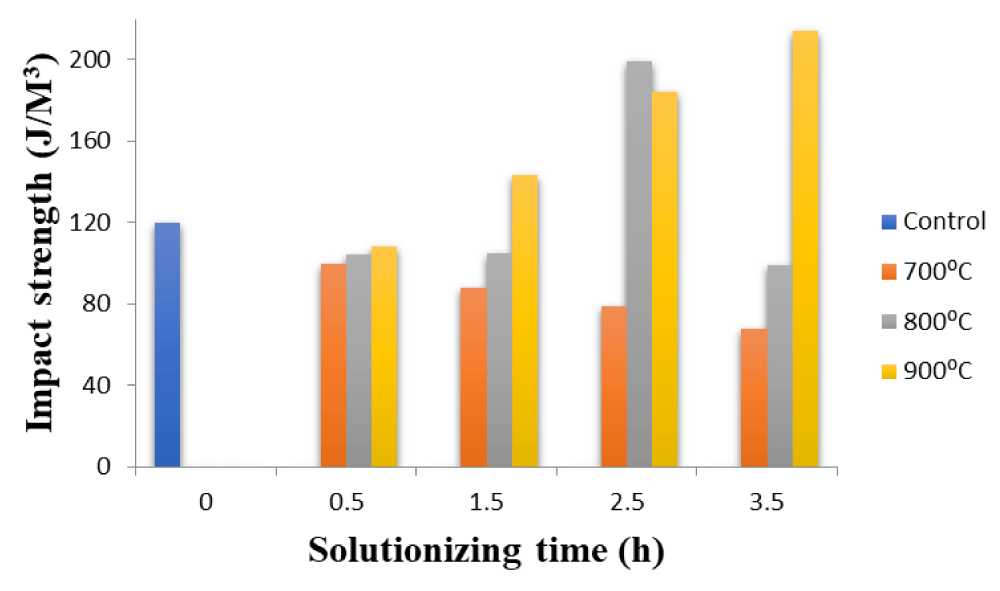

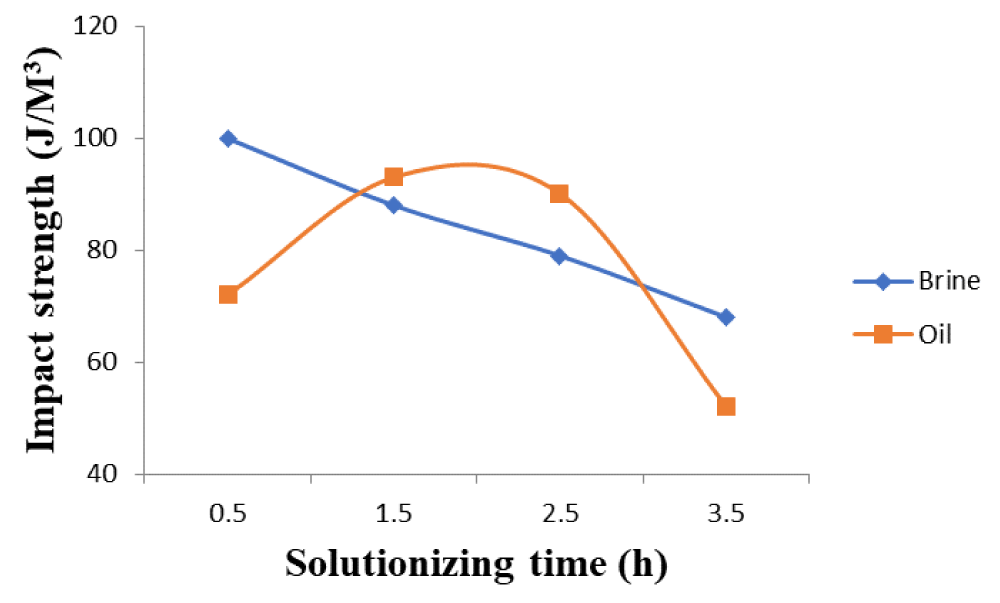

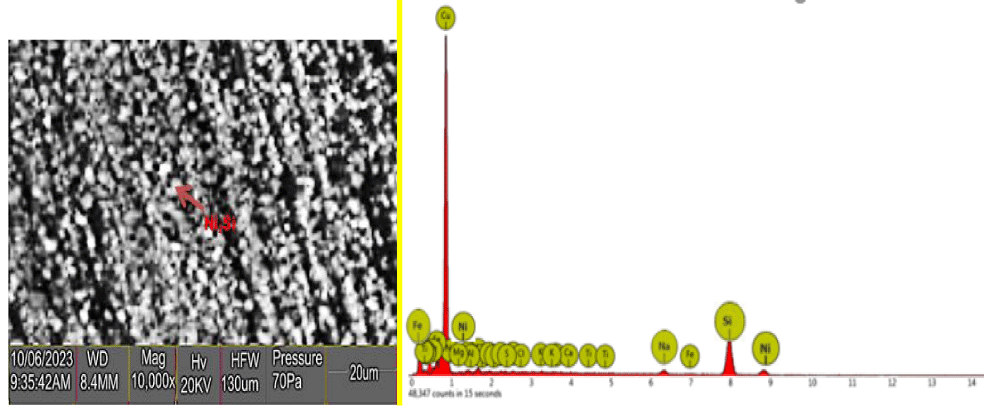


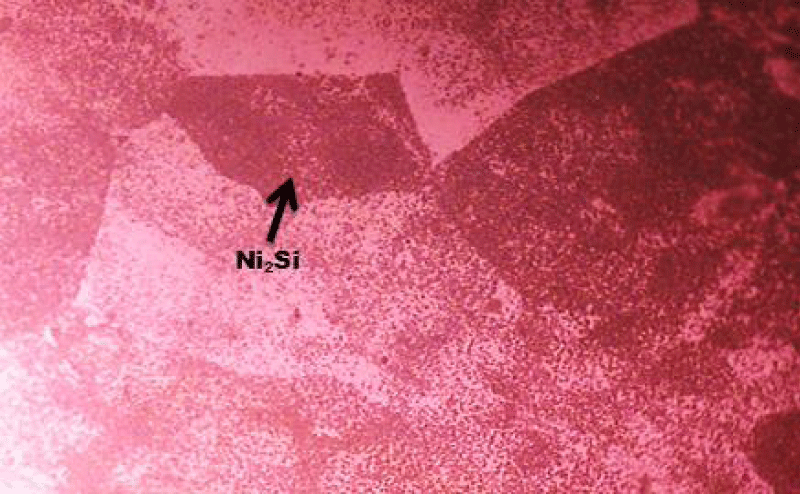
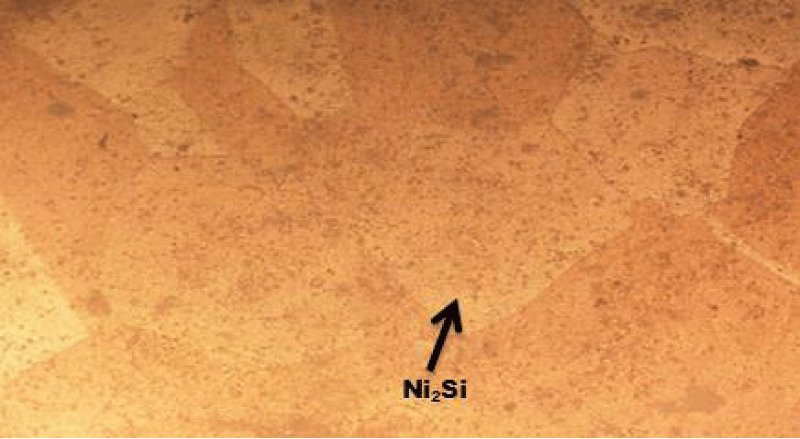
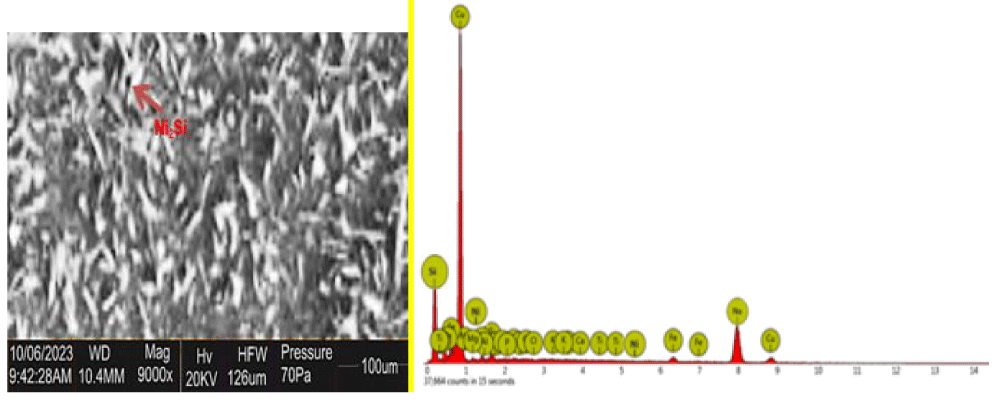


 Save to Mendeley
Save to Mendeley
